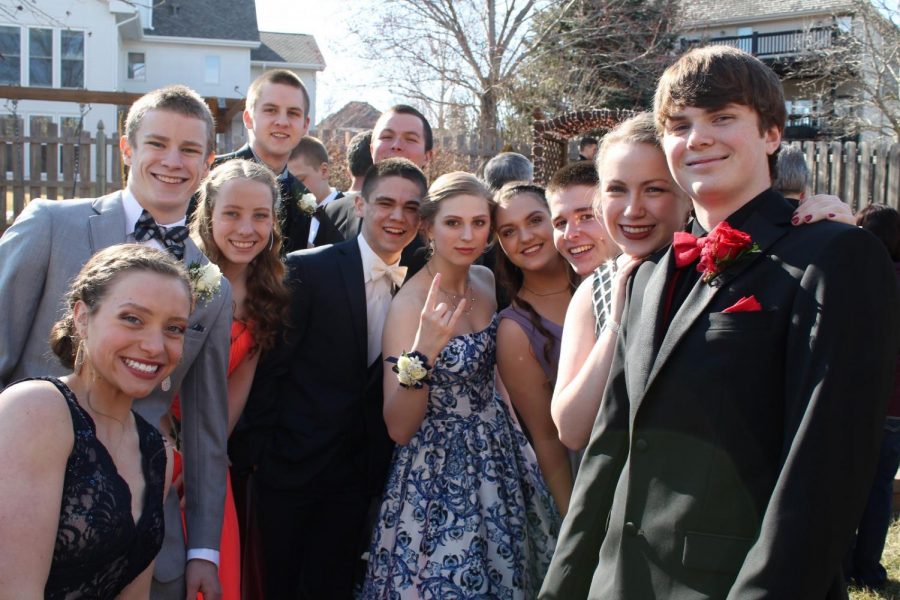Consumer Culture Drives Prom
A Look Behind the Inflated Prices of Prom
April 10, 2018
Christmas, Halloween and Valentine’s day are some of the staple holidays most Americans cherish throughout the year. These times of the year are filled with love and sharing between family and friends. Although these holidays are mostly seen as positive and memorable, they have also received criticism for what they have become in America.
These times of the year (among others) are classified as Capitalist Holidays because of the exposition of the exaggerated consumer culture that occurs throughout the holidays. During Capitalist Holidays, consumers are made to think they need to buy certain products they might not really need because of the holiday. Candy on Halloween, special gifts to your significant other on Valentine’s day, and the endless amount of gifts and decorations it seems like you need to buy for Christmas.
In high school, the Prom that is held every spring holds a lot of similarities to these holidays and therefore can receive the same criticism. Prom is not a holiday, but the celebration is and has been a consumer driven event for a long time.
Don’t get me wrong, I love Prom and other school dances just as much as everyone else, but it cannot be denied that the expenses that go along with Prom are inflated, even compared to other formal dances such as Homecoming.
If you buy them before Friday, the tickets for post Prom and Prom combined are $30 and have been more expensive in past years. For the guys, tux rentals range from $100-$200 as well as buying appropriate shoes and purchasing a corsage for their date if they have one. For the girls the prices are exponentially worse. The dresses, makeup, shoes, nails, hair and other preparations for the dance can add to being double, or even triple of the men’s.
For teenagers with part time jobs who are probably also saving up for other big expenses such as college, this isn’t pocket change. Even if parents are paying for their students, this amount of money isn’t spent lightly. Some might have to pay for not just one student, but two or three. If a student and their parents can’t afford, the student might have to skip out on Prom because of the money. Wealth shouldn’t be the determining factor of whether or not someone goes to a school event that is supposed to be for all juniors and seniors.
But despite these prices, a majority of juniors and seniors, including myself, still choose to spend the money and attend the dance. Prom is still and always will be a very popular event no matter the cost.
Why?
As an underclassman, you watch anxiously until you’re finally allowed to purchase a ticket, but once you’re there you realize that although it is still very fun, it is just another high school dance only with more expensive clothing and a fancier venue.
The exclusivity of Prom, the tradition, and reputation of the memories of Prom told to us by the upperclassmen before us make for a perfect opportunity for stores and other businesses to push expensive products on us without us really needing them.
This show of extreme consumerism isn’t inherently bad though. Here in west Omaha, there aren’t many events or people who consistently need tuxes and dresses from local shops. As a result, local businesses rely on these kind of events to stay afloat and able to provide services and products for people who need formal wear for events other than a school dance. Although still very expensive, the ability of families to spend this kind of money on just a dance without much negative economic burden also shows economic strength within the community and America as a whole since Prom is mostly nationwide.
Just like Valentine’s Day, Christmas, Halloween, etc, we are made the think that without buying the prettiest dress or renting the fanciest tux we are somehow missing out on an experience pivotal to our high school memory.







